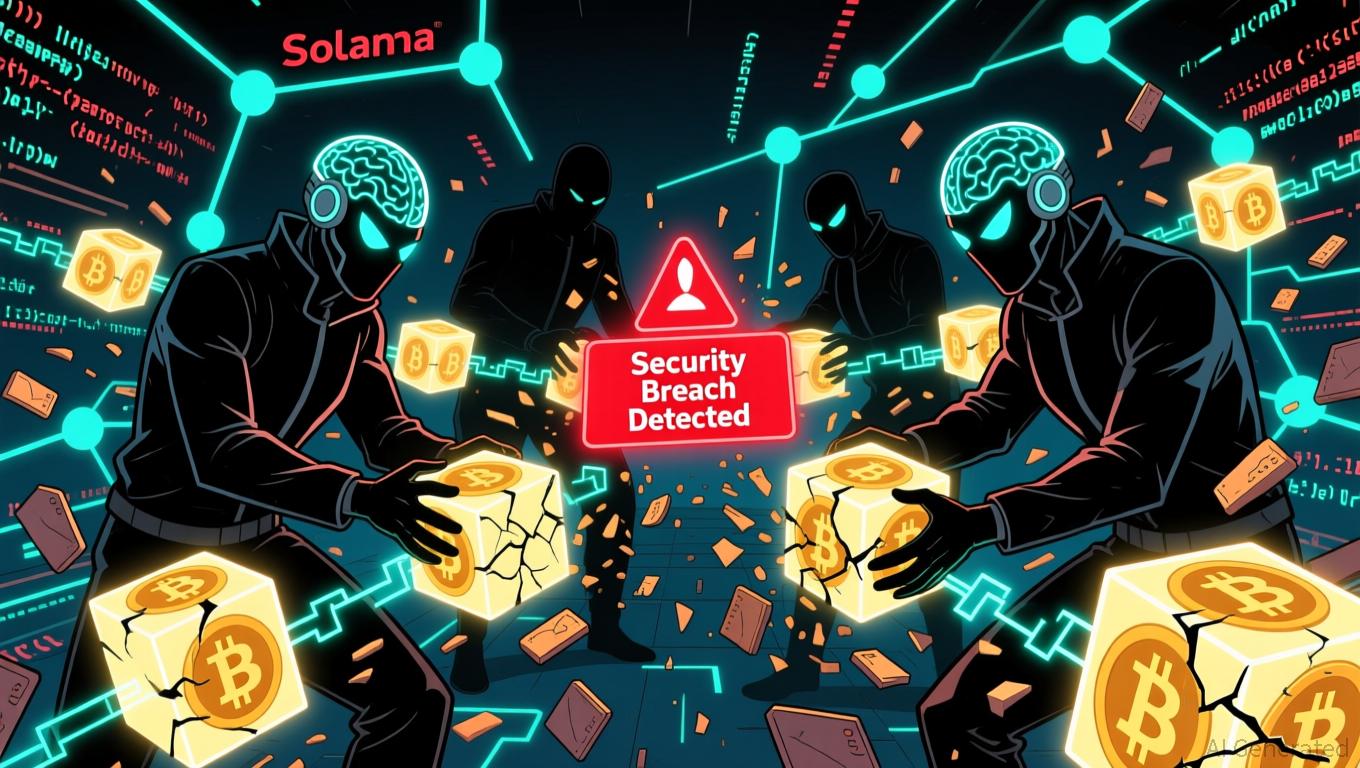Hyperliquid (HYPE) Price Rally: DeFi Liquidity Breakthroughs and Investor Outlook in Late 2025
- Hyperliquid (HYPE) introduces HIP-3 Growth Mode and BLP to attract institutional liquidity via fee cuts and shared pools. - Despite 30% usage growth and $2.15B TVL, HYPE's $37.54 price lags key resistance amid volatile sentiment and a $4.9M bid manipulation loss. - Breaking $42.75 resistance could trigger self-reinforcing liquidity growth, but failure risks $35 support breaches and eroded trust in DeFi's institutional readiness.
Structural Upgrades: A New Era for On-Chain Liquidity
HIP-3 Growth Mode marks a significant shift from conventional fee models on Hyperliquid. By reducing taker fees by as much as 90% and allowing market makers to set fees as low as 0.0045%–0.009%, the platform seeks to draw in substantial liquidity, a prerequisite for institutional engagement. This is
Adding to this, the BorrowLendingProtocol (BLP) introduces shared liquidity pools for assets such as
Market Sentiment: Between Optimism and Pessimism
Despite these technical strides, HYPE’s price has experienced considerable turbulence. By the end of November 2025, the token settled at $37.54, remaining below significant resistance points. Technical analysis offers mixed signals: open interest (OI) has climbed 10.89% to $1.77 billion, indicating heightened speculation, while
Recent events have added further complexity.
The Path Forward: Breaking the $42.75 Hurdle
The next major challenge for HYPE is surpassing the $42.75 resistance mark. If the token manages to break through, it could set off a positive feedback loop: rising prices would attract more liquidity providers, and higher TVL could draw in institutional players, reinforcing the platform’s leadership. On the other hand,
Broader economic factors must also be taken into account. With global interest rates stabilizing and regulatory clarity improving for tokenized assets, Hyperliquid’s emphasis on real-world yield products positions it to tap into a $10 trillion market. Still, successful execution is critical. The platform’s ability to sustain TVL growth while addressing risks such as bid manipulation will ultimately determine whether its innovations are seen as groundbreaking or as cautionary lessons.
Conclusion
Hyperliquid’s story in late 2025 reflects the dual forces shaping today’s DeFi space: the allure of structural progress and the challenges posed by shifting market sentiment. While HIP-3 Growth Mode and BLP present a strong case for institutional-grade liquidity, their effectiveness will depend on overcoming both technical and psychological obstacles. For investors, the takeaway is clear—structural improvements are vital, but they must be matched with effective risk controls and transparent governance. As the market anticipates HYPE’s next steps, one thing is evident: the evolution of DeFi liquidity will depend not only on technological innovation, but also on the resilience and trust of its community.
Disclaimer: The content of this article solely reflects the author's opinion and does not represent the platform in any capacity. This article is not intended to serve as a reference for making investment decisions.
You may also like
XRP News Today: XRP ETF Momentum Contrasts with Declining Network Engagement
- XRP's ETF inflows exceed $420M daily, contrasting with 50% lower on-chain payment volume and declining transaction counts. - Technical indicators show fragile bullish momentum below $2.28, while RSI rejection and EMA positioning highlight bearish pressure. - Fed's 81% rate cut probability and ETF-driven demand could push XRP toward $3, but network activity weakness raises sustainability doubts. - MACD buy signals clash with declining 50-day EMA ($2.38) and structural vulnerabilities in ETF-dependent pric

Ethereum News Update: North Korean Cybercriminals' Cross-Chain Money Laundering Reveals Vulnerabilities in Crypto Security
- North Korean hackers suspected in $36.8M Upbit breach used multi-chain laundering across Solana and Ethereum to obscure stolen assets. - Upbit froze transactions, pledged user reimbursements, and faces regulatory fines for delayed reporting amid a $10.3B merger with Naver. - Attack mirrors 2019 Lazarus tactics, exposing crypto industry vulnerabilities as stolen funds were rapidly converted into $1.6M via 185 wallets. - Market volatility surged with altcoin price spikes, while regulators intensify scrutin

Blazpay's 24-Hour Timer: AI-Powered Token Set to Dominate the 2025 Cryptocurrency Surge
- Blazpay's Phase 4 presale enters final 24 hours with $1.52M raised and 78.6% tokens sold, outpacing initial sales projections. - Analysts highlight 3.4x-5x return potential for early buyers, citing AI-powered trading tools, multichain infrastructure, and audit-backed security protocols. - Investors can purchase BLAZ tokens via USDT/ETH/BNB through the official portal, with referral incentives and gamified rewards boosting community engagement. - Project emphasizes real-world utility including automated t

Bitcoin News Update: MSCI Regulation Ignites Tension Between Bitcoin and Major Traditional Financial Institutions
- MSCI's proposed rule to exclude firms with over 50% crypto assets risks triggering $8.8B in forced Bitcoin sell-offs from index-tracking funds by 2026. - JPMorgan's analysis highlights existential threats for crypto-focused companies like Strategy (MSTR), which could face $2.8B in passive outflows alone. - Critics accuse MSCI and JPMorgan of bias, citing the bank's anti-crypto stance and the "binary cliff effect" of the 50% threshold destabilizing market eligibility. - The debate reflects a clash between
